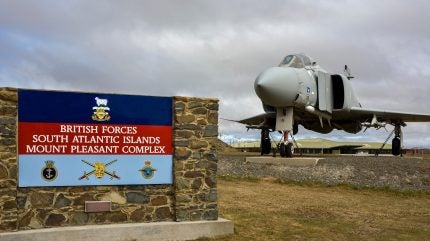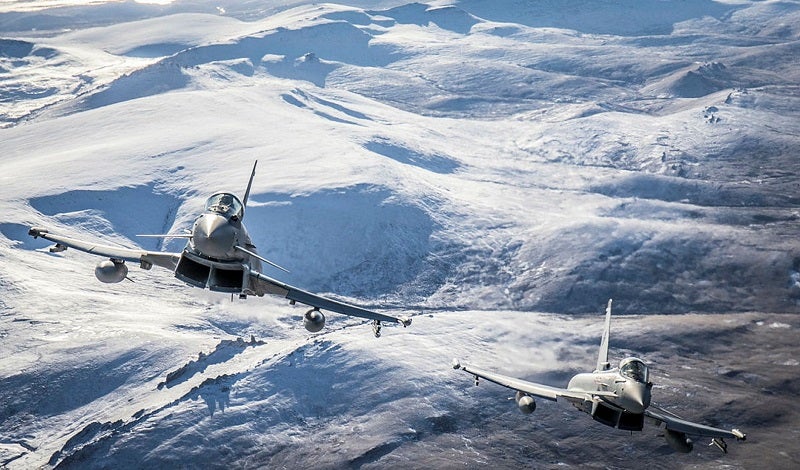
The UK Ministry of Defence will expand runway repairs at the Royal Air Force’s (RAF) South Atlantic outpost, Mount Pleasant Complex, in East Falkland.
Building is due to commence soon, with equipment and material already bound for the islands by ship 8,000 miles away from Britain.
New runway repairs
This £20m ($26m) project will replace 20,000 square miles of airfield ground by resurfacing the Foxtrot taxiway and the threshold – the part of the runway where aircraft touch down when landing.
This infrastructure development expands on the £8.9m project in April 2024 to resurface the Air Loop, part of the taxiway system which allows aircraft to move onto and from the runways. This involved resurfacing 9,400 square miles in less than a month, removing 3,500 tonnes of concrete, initially laid 40 years ago, and replacing it with stone mastic asphalt.
In 2023, the MoD also implemented measures to extend the life of the ageing runway. A protective layer was used to sustain surfaces until they came to be fully re-laid.
“We’re also lucky to have the support of 8 Engineer Brigade Royal Engineers who have supplied military engineers,” Major Brad Southall, the project manager commented. “They will undertake quality control and liaise between the construction team and the airfield personnel so we can ensure that we can work effectively around continuing air operations.”
How well do you really know your competitors?
Access the most comprehensive Company Profiles on the market, powered by GlobalData. Save hours of research. Gain competitive edge.

Thank you!
Your download email will arrive shortly
Not ready to buy yet? Download a free sample
We are confident about the unique quality of our Company Profiles. However, we want you to make the most beneficial decision for your business, so we offer a free sample that you can download by submitting the below form
By GlobalDataThe repairs need to be undertaken quickly so they are complete before the start of the South Atlantic winter, as poor weather conditions make construction next to impossible during the winter months. The work is therefore expected to complete in March 2025.
Securing the Falklands
Naturally, the UK government has bolstered security measures on the British Overseas Territory since the liberation of the islanders from Argentine invasion in 1982.
More recently, though, following the agreement between Denmark and Argentina for the sale of a squadron of F-16 fighters to Buenos Aires, renewed attention has been placed on Britain’s ability to defend the Falklands, and whether the balance of power is shifting.
There are around 1,500 UK military personnel stationed on the Falkland Islands at any one time.
The RAF maintain a single flight of four Tranche 1 Typhoon fighters is based at RAF Mount Pleasant, tasked with air combat patrol of the islands and the surrounding areas.

The Tranche 1 fighters are the oldest versions of the Typhoon, of which 30 remain in service with the RAF, which also operates 107 of the more advanced Tranche 2 FGR4 variants. The Tranche 1 has no ground attack capability, and more limited sensors.
The main land elements of the UK’s presence on the Falklands are mainly made up of the British Army’s Royal Engineers and Royal Artillery (RA), with the latter unit operating the Sky Sabre ground-based air defence (GBAD) system.
Sky Sabre, an air defence system operated by 16th Regiment RA, comprises the long-range AMB 3D surveillance radar and the Common Anti-Air Modular Missile (CAMM), which is able to offer medium-range missile and aircraft interdiction at up to 25km, increasing to 45km through the use of the CAMM-Extended Range variant under development.
Additional reporting from Richard Thomas.



